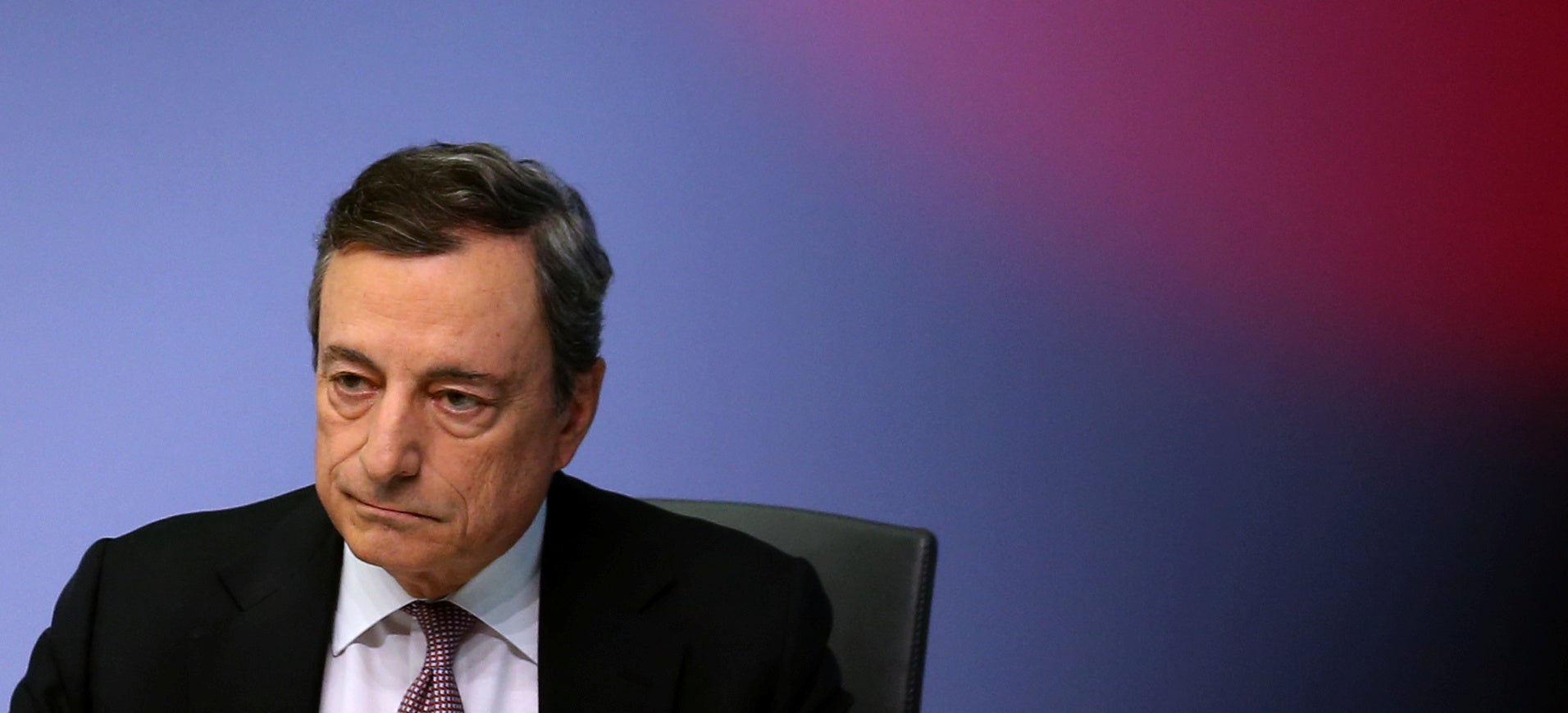The ECB, and central banking, is at a crossroads
The European Central Bank meeting tomorrow (Sept. 12) is one of the most significant in recent memory—not because it may cut rates, but because it might not.


The European Central Bank meeting tomorrow (Sept. 12) is one of the most significant in recent memory—not because it may cut rates, but because it might not.
Taking a neutral stance will reveal the dirty secret in monetary policy: Central bankers can’t prevent a recession. Ten years into an economic recovery coupled with some troubling headwinds have people nervous a recession may be coming, which has led to more calls for more expansionary monetary policy. But others are worried cutting rates further into negative territory is causing more harm than good, and that monetary policy has reached its limits.
“The ECB’s monetary policy is doing its duty, but it can’t do everything, and it certainly can’t perform miracles,” Bank of France governor François Villeroy de Galhau said in a recent interview.
The ECB’s conundrum
The central bank’s key interest rate is currently at -0.4%. Expansionary policy would involve cutting this rate further or buying more long-dated bonds, known as quantitative easing (QE). Historically, economists assumed that lower interest rates spur economic growth by reducing the cost of borrowing and encouraging people to spend more, because the returns on savings aren’t as high.
But there isn’t yet sufficient time or evidence to prove the effectiveness of cutting rates further in a long-term, low-rate environment. Persistent and very low rates, however, make consumers feel poorer, which can reduce spending. Negative rates also undermine bank profitability, which can discourage lending—though lending in the euro zone has been strong despite low rates. Some policy makers (paywall) and economists are arguing that enough is enough, and a further rate cut may not only be ineffective, but damaging to the economy.
Others argue that more stimulus is necessary to fend off economic headwinds, like a weakening European economy, Brexit, and trade uncertainty. But central banks can’t prevent a recession because monetary policy can’t change things that determine long term growth—like productivity or the population of workers—let alone offset a major economic shock. Monetary policy can at best smooth the rough edges of the business cycle by increasing money running through the economy.
Central bankers want the best of all worlds
The ECB is hinting it may not cut rates and conceded that negative rates could be damaging to the economy (paywall), though they maintain their negative rate policy so far has been successful, citing increased lending to households and corporations since 2014, when rates first went negative.
Messages like this are typical of modern central banking, because communicating a plan and projecting competence is one of the most powerful tools for central bankers. It reflects an evolution in how economists have changed their thinking on what kind of monetary policy works best, with the debate often coming down to rules versus discretion.
Rules means that central banks would always respond in the same predictable way to certain economic events or data. Discretion, meanwhile, involves using more judgment, meaning that central bankers can do whatever it takes to keep the economy booming. Economists used to argue that following rules was better (unless the economy is in a bad recession) because it was too tempting to use monetary policy to juice the economy in the short-run, often in response to political pressure. Over-using a central banker’s tool, like a rate cut, weakens its effectiveness and subjects central banks to more political scrutiny, thus impairing a central bank’s ability to help the economy in a recession. The argument goes that central-bank power and political independence is best maintained by following pre-specified rules (paywall).
In the 1990s the prevailing thought in central banking was inflation targeting, through a well-publicized target rate of inflation. It was in essence a rule, though there was some scope for discretion because the central banker could use some judgement to maintain inflation. The idea was that central bankers could get some of the benefits of discretion, but few of the costs as inflation targeting was a relatively modest goal and the target acted as a rule.
These days, the fashion is forward guidance, which promised the best of both worlds by committing to a rule in the future and allowing some discretion today. It assumes communication and credibility is a central banker’s most important tool. Forward guidance became very attractive after the 2008 financial crisis when central bankers wanted to justify discretion as they were desperate to accelerate a slow recovery, and fiscal policy was largely absent.
Return to humility
But the draw back is that central bankers are then on a slippery slope to full discretion, as central banks become more short-term in their focus and leave the rules for some distant point in the future. It may explain why we are now hearing lots of communication from central banks that promise discretionary policies to avoid a downturn, fix structural problems, compensate for political missteps, and talk of an inflation target that is never reached.
This is why the ECB meeting this week is so significant. If the ECB does not cut rates it is admitting that it is not as wise and all-powerful as we’d like to believe, and that discretion has reached its limits. A neutral stance would acknowledge there are weaknesses in the economy, but there’s not much they can or should do. It is a big break from the way central bankers have communicated lately, and would mark a return to the humility economists had urged before the crisis.